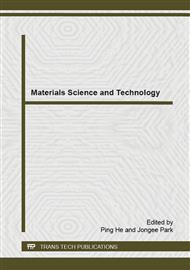p.21
p.26
p.32
p.38
p.42
p.49
p.55
p.58
p.62
Non-Destructive Testing for the Evaluation of Pozzolanic Mortar Reinforced to Corrosion
Abstract:
Our work aims to studying the addition of the natural pozzolan located in Beni Saf (Algeria) at non-destructive testing for the evaluation of pozzolan mortar reinforced to corrosion. We chose to study this natural addition because of its low cost and its pozzolanic reactivity. To do this, we have carried out tests on mortars made to Portland cement CEM I 42,5 N and substituted by weight based percentages of different natural pozzolan (10%, 20% and 30%). We have measured the corrosion potential and the corrosion speed of different deadlines. The results indicated that is it possible to highlight the beneficial effect of this addition. The analysis of achievements shows that the addition of the pozzolan in optimal quantities has the following advantages: protection of reinforcement against corrosion and increase the resistance against the sulfate attack (5% Na2SO4).
Info:
Periodical:
Pages:
42-48
Citation:
Online since:
December 2014
Authors:
Keywords:
Price:
Сopyright:
© 2015 Trans Tech Publications Ltd. All Rights Reserved
Share:
Citation:


